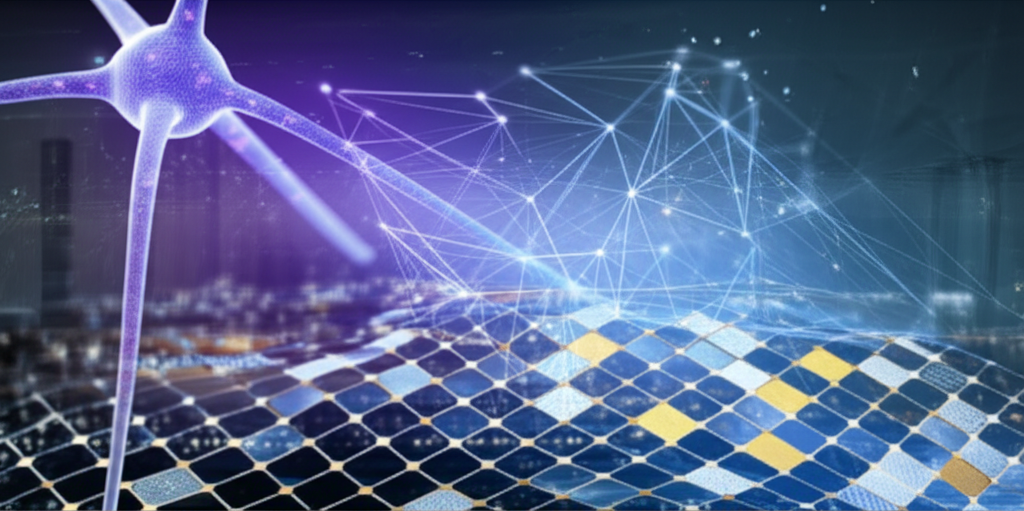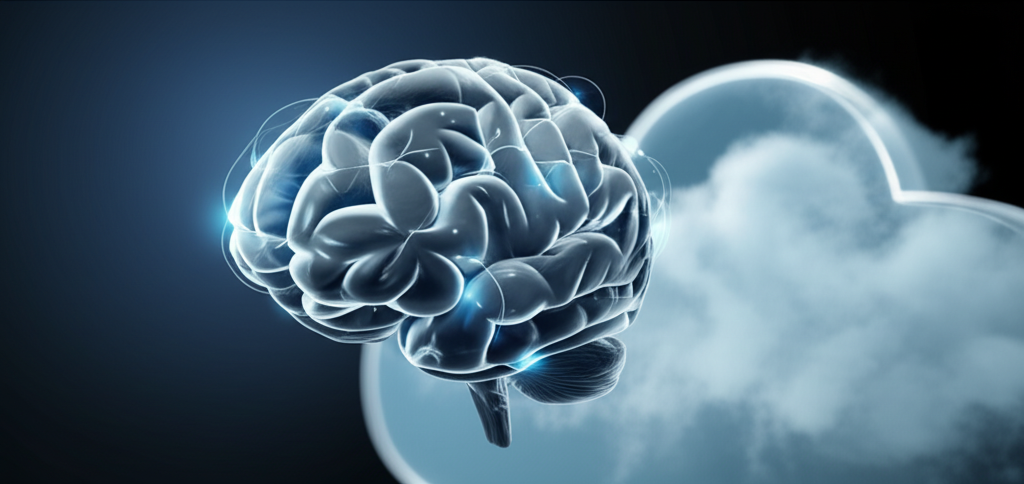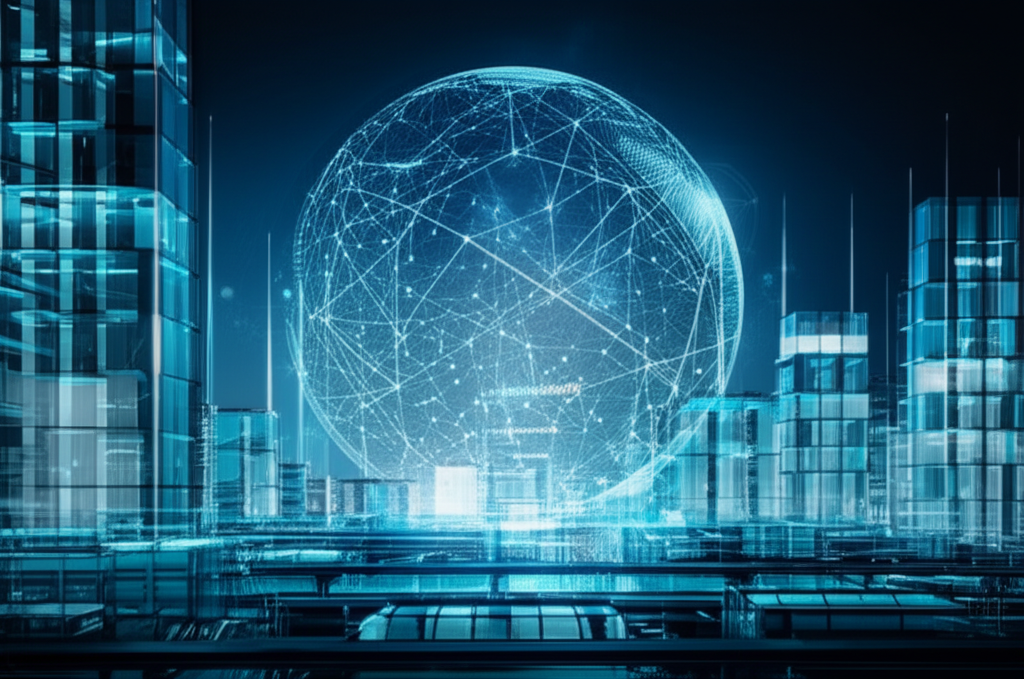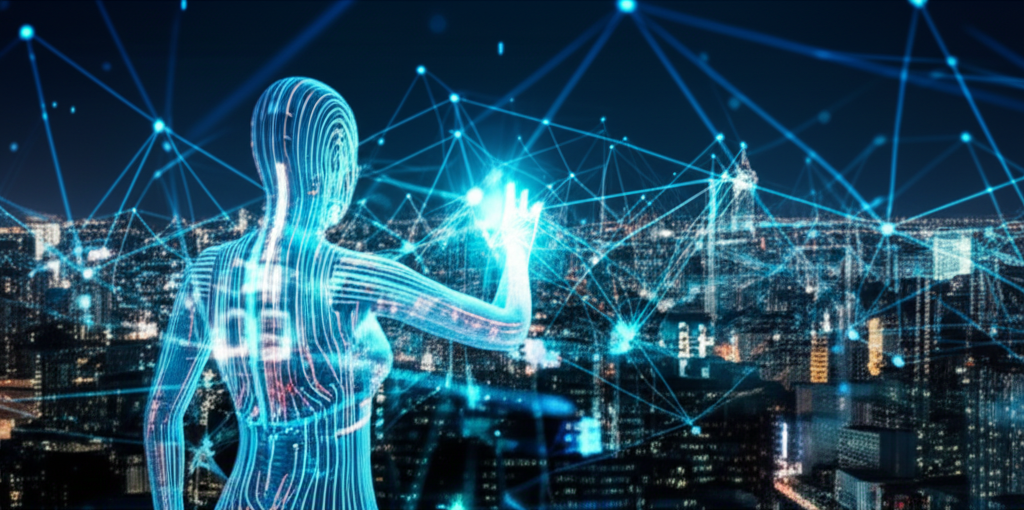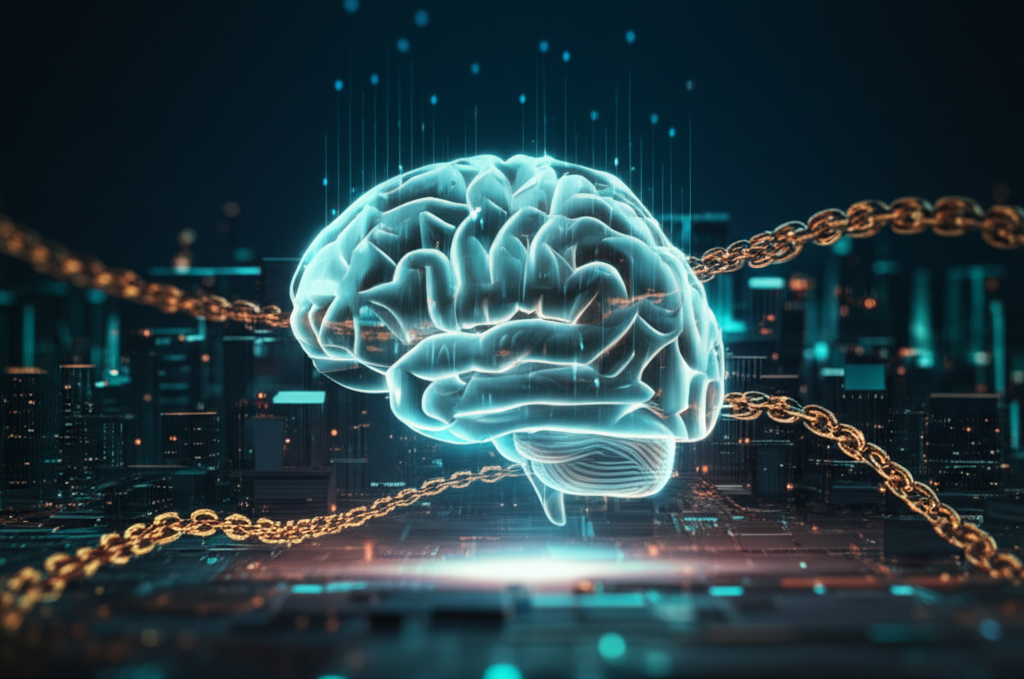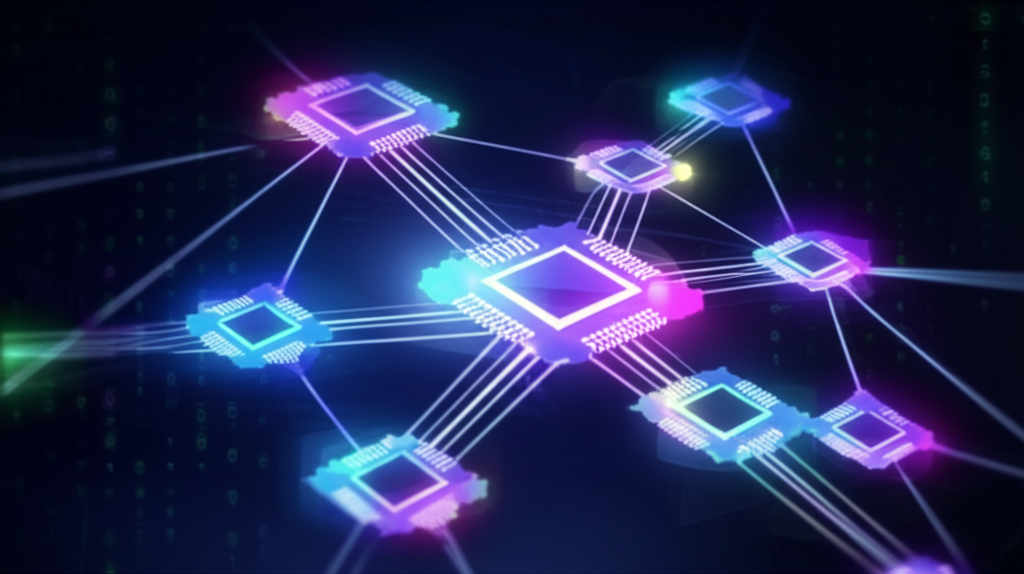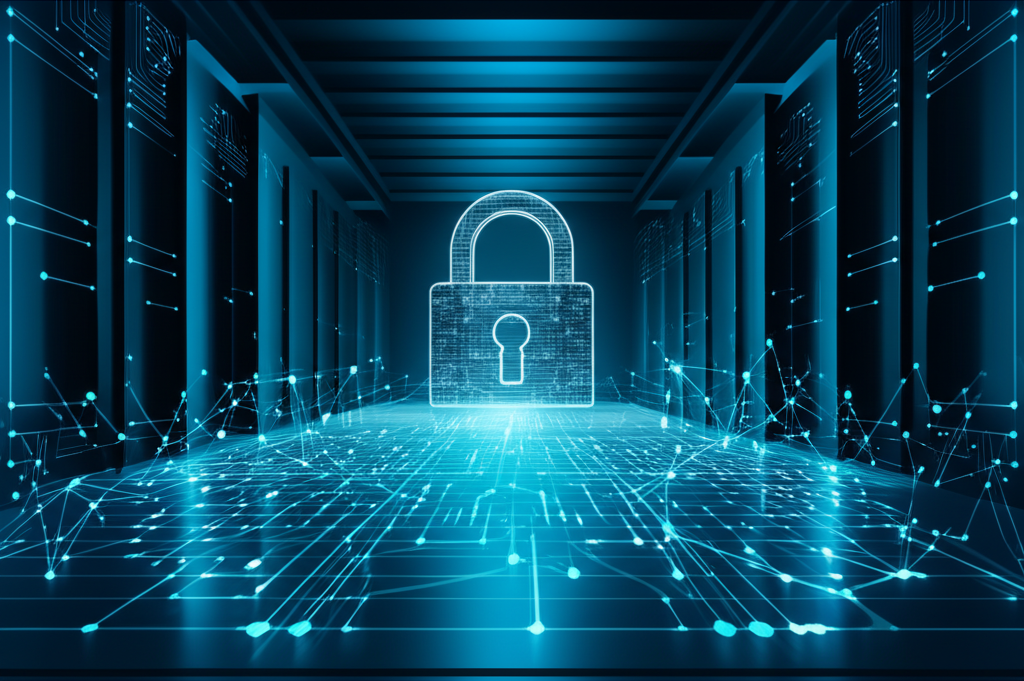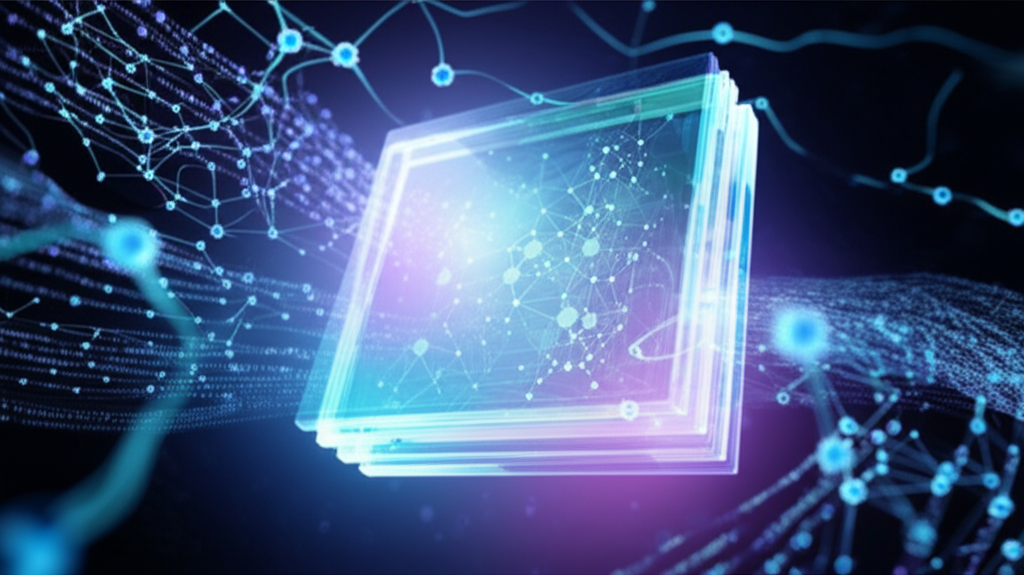In today’s digital landscape, the integration of artificial intelligence (AI) with blockchain technology emerges as a groundbreaking fusion. As AI continues to evolve, the need for decentralized frameworks to ensure transparency and security becomes evident. Blockchain, with its inherent capabilities, offers unique opportunities to address these needs, positioning itself as a critical component in the future of AI development. Together, these technologies have the potential to redefine industries and pave the way for innovations that were previously unimaginable.
This article aims to unravel the intricate relationship between decentralized AI and blockchain. By understanding the fundamentals of each technology and their combined applications, readers will gain insights into the potential benefits and challenges of this powerful synergy. Prepare to explore practical solutions, real-world applications, and the vital role blockchain plays in advancing AI technologies effectively and securely.
Core Concepts: Blockchain and AI
Decentralized Network Principles
The core principle of decentralization is the distribution of power and decision-making across a network. In the context of blockchain, this is achieved through a distributed ledger that is maintained by all participants in the network. This ensures that no single entity has control over the data, promoting transparency and trust. The decentralized nature of blockchain aligns seamlessly with the goals of AI, which often require access to large, diverse datasets while safeguarding privacy.
This concept is akin to a peer-to-peer file-sharing system, where control and value are spread across all users rather than centralized. By applying this decentralized model to AI, data becomes more accessible while maintaining individual privacy, which is vital for building more accurate and unbiased AI models. This foundational understanding sets the stage for exploring how blockchain and AI can coalesce to benefit various industries.
Blockchain as a Trust Layer
Blockchain introduces an innovative trust layer through its immutability and consensus mechanisms. Smart contracts, which are automated agreements executed on blockchain platforms, further enhance trust by enforcing rules without human intervention. This trust layer is crucial for AI applications that require reliable data sources and transparent decision-making processes.
In practice, blockchain can serve as an unalterable record of data inputs used by AI models. By ensuring that data is verifiable and tamper-proof, AI systems can operate with enhanced integrity. This new layer of trust not only boosts the reliability of AI outputs but also facilitates regulatory compliance, especially in sectors prone to data fraud and abuse.
AI’s Data Dependency
AI relies heavily on large quantities of data for training and decision-making. One of the challenges is ensuring the quality and authenticity of this data. Blockchain’s ability to provide a secure, verified, and traceable data supply chain is invaluable for AI applications. By offering an audit trail for data provenance, blockchain helps in eliminating data biases and errors that could otherwise skew AI models.
Think of blockchain as a meticulous historian that records every transaction, making data sourcing transparent and accountable. This accountability plays a crucial role in reducing the risks associated with AI/data analytics, where even minor inaccuracies can lead to significant miscalculations and flawed outcomes.
Convergence of AI and Blockchain
As AI technologies evolve, their convergence with blockchain becomes increasingly feasible. Blockchain can serve as a decentralized coordination mechanism, managing AI models and ensuring they operate as intended without the need for central management. This synergy enables innovations such as decentralized autonomous organizations (DAOs), which can autonomously conduct analysis and make decisions.
By leveraging blockchain, AI systems can function more autonomously and securely. The resulting framework is not only more efficient but also opens new possibilities for autonomous machine networks—leading to a more interconnected world where new, unprecedented solutions can be realized.
Applications: Real-World Uses
Healthcare Data Security
In healthcare, blockchain and AI combine to provide secure data sharing while maintaining patient privacy. Blockchain ensures that medical records remain confidential, tamper-proof, and accessible only to authorized individuals. AI can then analyze this secure data to provide personalized treatment plans.
This partnership enhances patient care by ensuring data integrity without compromising privacy. By using blockchain as a bedrock of trust, AI can safely extract valuable insights from sensitive data, advancing medical research and improving patient outcomes sustainably and ethically.
Supply Chain Transparency
Blockchain bolsters supply chain transparency by enabling traceable documentation of every transaction. When combined with AI’s predictive analytics, companies can optimize supply routes, anticipate demand, and spot potential disruptions before they happen.
The result is a more resilient supply chain with minimized risks and improved efficiency. This integration facilitates an unprecedented level of insight into supply chain operations, reducing waste and optimizing resource allocation on a global scale.
Decentralized Autonomous Systems
Decentralized autonomous systems, powered by AI and coordinated via blockchain, can operate independently to perform complex tasks. These systems are capable of self-maintaining and adapting to new conditions without human oversight, such as drone fleets for logistics or automated trading platforms for financial markets.
AI’s capacity to learn and improve, coupled with blockchain’s secure transaction tracking, provides a robust framework for these autonomous operations. This dynamic encourages a self-sustaining ecosystem where technological systems work in unison, free from central control, leading to greater innovation and efficiencies.
Insurance Claim Processing
The insurance industry can leverage the combined strength of AI and blockchain for processing claims more efficiently and transparently. By utilizing smart contracts, claims can be automatically verified and processed, reducing the need for tedious paperwork and manual verification.
This approach reduces administrative overheads and accelerates the claims process, ensuring that policyholders receive timely responses while maintaining high standards of security and trust. It represents a transformative step in insurance administration, ultimately enhancing customer satisfaction through rapid, accurate service delivery.
Challenges and Security Considerations
Scalability Issues
One of the primary challenges facing the integration of blockchain and AI is scalability. Blockchain networks can struggle to handle the vast amounts of data and high transaction throughput required by AI applications. The collaboration requires efficient infrastructure to support these demands without losing performance.
To address these issues, advancements in sharding and layer two solutions are being explored. These enhancements aim to improve scalability while maintaining decentralization and security, enabling stable integration for future applications.
Data Privacy Concerns
Data privacy remains a critical concern, especially when integrating sensitive datasets with blockchain. Although blockchain is inherently secure, ensuring that personal data is handled appropriately on decentralized networks is vital. AI’s access to data must respect privacy regulations like GDPR.
Solutions include the use of privacy-preserving technologies such as zero-knowledge proofs and homomorphic encryption, which enable computation on encrypted data without exposing its contents. These technologies assure compliance with privacy norms and safeguard personal information.
Adoption and Compliance
Broad adoption of blockchain and AI technologies requires significant shifts in current regulatory frameworks. Compliance with diverse legal standards across regions can complicate implementation. Scalability of regulations is essential to manage new technological landscapes responsibly.
Industry collaboration and dialogue with regulators are essential to establish realistic standards and facilitate widespread adoption. These discussions should focus on balancing innovation with protection, ensuring that new systems benefit the global society equitably.
Ethical Implications
The ethical implications of merging AI with blockchain cannot be overlooked. As autonomous systems emerge, ensuring they operate within ethical guidelines is imperative. Blockchain can provide visibility into AI decision processes, but human oversight remains crucial.
Continuous ethical evaluation and adaptation of AI governance policies are required to mitigate risks. This ensures that as technologies evolve, they do so while respecting human values and societal priorities, capturing the full potential of these innovations.
Conclusion
Decentralized AI with blockchain as its missing link presents an extraordinary opportunity to revolutionize a multitude of industries. Understanding these core concepts and effectively addressing the challenges involved are crucial steps in leveraging these technologies’ full potential. With enhanced transparency, increased efficiency, and greater security, this integration has the power to create a more interconnected and autonomous global society. As we move forward, collaboration across sectors and continual adaptation of technological and ethical standards will be key in shaping a future powered by these revolutionary technologies.
FAQs
What is the relationship between AI and blockchain?
The relationship between AI and blockchain is built on the principles of decentralization, transparency, and security. Blockchain acts as a decentralized ledger that ensures data integrity and trustworthiness, aligning with AI’s need for secure and large datasets. When combined, AI can leverage blockchain’s capabilities to enhance data security and transparency while executing algorithms more efficiently. This partnership aims to redefine industries by integrating blockchain’s trust mechanisms with AI’s analytical prowess.
How does blockchain enhance AI applications?
Blockchain enhances AI applications through its immutability and consensus mechanisms. By providing a verifiable and tamper-proof record of data, blockchain ensures that AI systems operate on reliable and authentic data inputs. Additionally, smart contracts on blockchain platforms can automate processes, facilitating transparent decision-making. This trust layer is critical for AI applications in industries like healthcare and finance, where data accuracy and integrity are paramount. The synergy between these technologies fosters more reliable AI models that are secure and compliant with regulatory standards.
What are the challenges of integrating AI and blockchain?
The integration of AI and blockchain faces several challenges, primarily concerning scalability, data privacy, and regulatory compliance. Scalability is a concern as the blockchain’s capability to handle vast data and high transaction throughput is limited compared to AI’s data needs. Data privacy is critical, requiring technologies like zero-knowledge proofs to secure sensitive information. Additionally, compliance with different global regulatory frameworks complicates widespread adoption, necessitating collaboration and dialogue with regulators to harmonize standards and embrace innovation responsibly.
Essential considerations for Core Concepts: Blockchain and AI include:
Development considerations focus on scalability, maintainability, and user experience optimization.- Powerful Synergy: Explore how blockchain’s decentralization enhances AI transparency by ensuring data integrity and reducing bias.
- Secure Collaboration: Understand the role of blockchain in protecting AI models through immutable and tamper-proof data storage.
- Scalability Potential: Leverage blockchain’s decentralized nature to boost AI applications, enabling efficient data sharing across networks.
- Trustworthy Automation: Implement smart contracts to automate AI processes, fostering trust without intermediaries in decision-making.
- Innovative Integration: Harness advancements in both technologies to create autonomous systems that redefine traditional business models.
| Concept | Explanation & Tools | Processes & Methodologies | Best Practices & Insights |
|---|---|---|---|
| Decentralized Data Storage | Decentralized storage solutions like IPFS and Filecoin provide distributed data storage without central control, greatly enhancing data security and accessibility. These platforms leverage blockchain principles to store and retrieve data, ensuring integrity and immutability. | Implement a decentralized data system leveraging IPFS by setting up nodes that connect and share data across multiple servers. Regularly update data partition protocols to maintain efficiency. | Regularly audit and monitor data integrity using cryptographic hashes. Employ redundancy strategies to prevent data loss and optimize node distribution for balance between redundancy and efficiency. |
| Smart Contracts in AI | Utilize platforms like Ethereum to create and execute smart contracts that automate aspects of AI workflows. Smart contracts ensure predefined conditions are met before proceeding, eliminating manual intervention and reducing errors. | Define AI model training conditions within smart contracts, specifying inputs, outputs, and data handling protocols. Test smart contracts extensively using Ethereum testnets to preempt errors. | Adopt secure coding practices when developing smart contracts to prevent vulnerabilities. Use tools like Remix for debugging/testing and follow a thorough audit process before deployment. |
| Data Privacy with Blockchain | Blockchain can enhance data privacy using privacy-preserving techniques like zero-knowledge proofs. These ensure data is validated without exposing actual data points, supporting secure AI outcome verification. | Develop zero-knowledge protocols that validate AI computations and data exchanges, ensuring user data remains protected while confirming output accuracy without revealing sources. | Integrate privacy layers within blockchain-based systems early in AI project lifecycles. Regularly review cryptographic protocols for compliance with evolving privacy laws (e.g., GDPR, CCPA). |
| AI Model Training with Blockchain | Leverage platforms like Ocean Protocol to facilitate AI model training using decentralized, secure datasets. Ocean enables selling, buying, and sharing data while maintaining provenance and privacy. | Initiate blockchain-based AI training by tokenizing datasets with Ocean Protocol, allowing datasets to be used securely across different AI models. Monitor provenance trail of datasets transparently. | Collaboratively develop AI models in consortia using shared tokenized data to enhance data diversity and model robustness. Balance between open data sharing and proprietary data protection strategies. |
| Transparent AI Decision-Making | Implement blockchain to ensure clear auditing and traceability of AI decisions. Projects like Google’s TensorFlow Federated can integrate blockchain to improve model transparency and accountability. | Create an immutable log of AI model decisions/changes on a blockchain ledger. Integrate with federated learning systems to enhance learning while ensuring model decisions are traceable. | Foster a transparent AI development culture by involving multi-stakeholder governance. Ensure constant review of AI decisions through this immutable ledger to uphold ethical AI practices. |
| Scalability Challenges | Scalability issues in AI-integrated blockchain can be mitigated using layer-2 solutions like Polygon, optimizing transactions without compromising speed or security. | Deploy layer-2 or sidechain solutions to handle high transaction volumes. Balance load between main blockchain and scalability layers, ensuring secure integration with AI systems. | Regularly evaluate scalability solutions to accommodate increasing data/transaction demands. Use sharding techniques to enhance blockchain’s capacity to manage concurrent AI operations efficiently. |
| Interoperability in AI and Blockchain | Facilitating interoperability with platforms like Polkadot allows different blockchains to communicate, enhancing cross-system AI functionality without data silos. | Develop bridge protocols that allow seamless communication between AI systems across multiple blockchain networks. Ensure these protocols support varied data formats and AI models. | Continuously update interoperability protocols to support emerging blockchain networks and AI requirements. Encourage standardized protocol development to ease cross-platform communication. |
What role does blockchain play in decentralized AI?
In decentralized AI, blockchain acts as a critical foundation by providing a distributed network that ensures security, transparency, and trust. Its decentralized nature eliminates the need for central control, allowing AI to access large datasets without compromising privacy. Blockchain can coordinate AI models autonomously, ensuring they function without central oversight or manipulation. This role enhances AI’s ability to operate in autonomous systems, such as decentralized autonomous organizations (DAOs), enabling more innovative and interconnected machine networks.
What are some real-world applications of AI and blockchain integration?
Real-world applications of AI and blockchain integration span diverse industries. In healthcare, they combine to secure data sharing and improve personalized patient care by analyzing blockchain-verified medical records. In supply chains, blockchain enhances transparency, while AI predicts and optimizes logistics, reducing risks and improving efficiency. Autonomous systems also benefit, as AI-driven operations managed by blockchain, like drone logistics or automated financial trading, showcase increased autonomy and accuracy. These applications underscore how AI and blockchain together can revolutionize traditional processes with innovative solutions.
